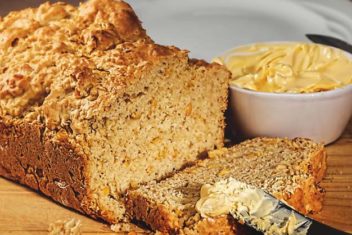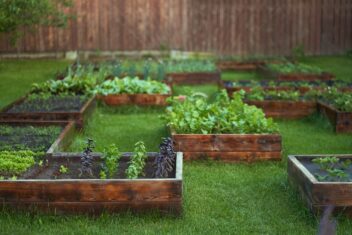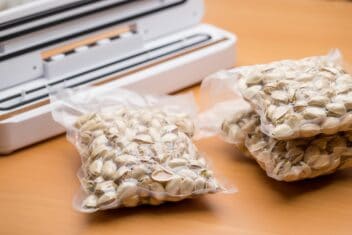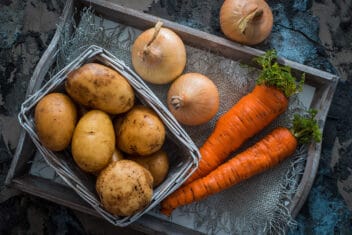I have to be honest; I am not a fan of following recipes. As a homesteader, I like to use what I have on hand and growing in my garden.
I simply don’t have the budget or time to run out and get the exact right ingredients to follow recipes to the dot. More often than not, I use recipes as inspiration and then make up my own creations from there.
Luckily when you are working with vinegar extractions, infusions, tonics, fire ciders, and even shrubs, you don’t need to be perfect. You only need a basic understanding of how flavoring works. Then, you can give yourself permission to try different extractions and have fun.
Also, never fear, even if your vinegar extraction recipes turn out awful, they can still make a great window cleaner or mold killer!
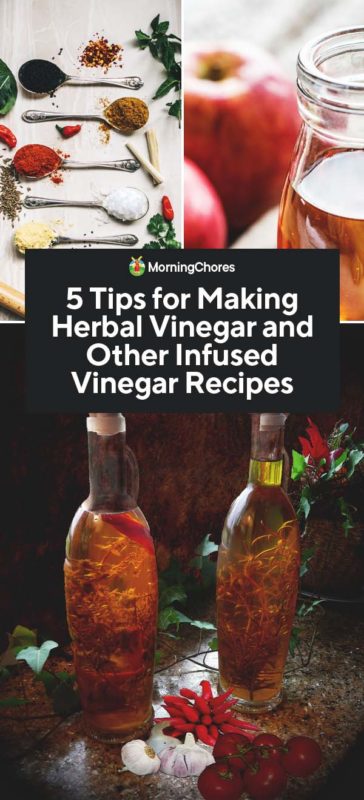
Making Your Own Herbal Vinegar Extraction Recipes
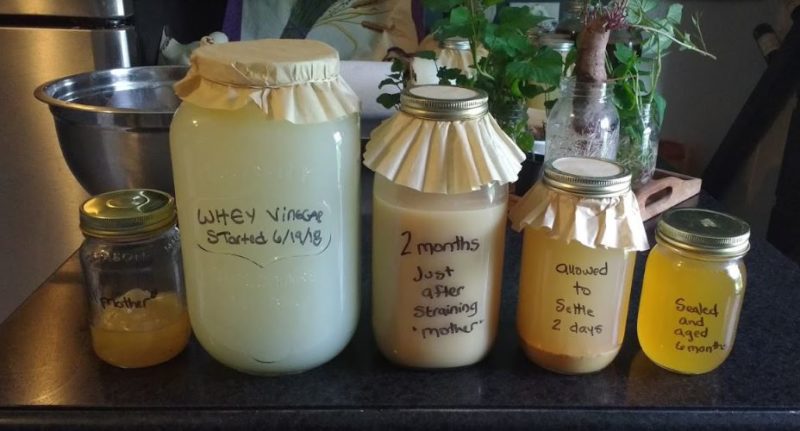
Whether you are working with store-bought or homemade vinegar, the part of the vinegar that does the flavor extracting is acetic acid. This acid breaks down the fibers of plant matter to extract the flavors.
When you work with alcohol extractions (e.g. making cordials) or water extractions (e.g. making simple syrups or tea) you extract not only the oils and minerals of the plant matter but also the sugars.
Vinegar works a bit differently than both alcohol or water. The acetic acid in vinegar metabolizes the sugars from the plant matter, making them into more vinegar. So, you only end up with the minerals and oils as flavor components in vinegar extractions.
Depending on the kind of plant matter you use, it may contain a lot of oils or only a little. Also, different plants have different mineral contents. The amount of oil in your plant matter and the density of minerals is what generates the flavors of the extractions in your vinegar.
In other words, the more oil and mineral content, the more flavor. For plants that are light on these, you need to use more plant matter, or perform multiple extractions, to achieve distinct flavoring.
Additionally, because the acetic acid breaks down plant fibers, it also extracts colors well. For example, purple sage only hints at purple in the garden. However, when extracted using vinegar, that purple comes through as a bright magenta.
Keeping this understanding of how vinegar extracts the flavors and colors of plant matter in mind will help you determine appropriate quantities for your different extractions.
5 Tips for Creating Your Own Delicious Infused Vinegar Recipes
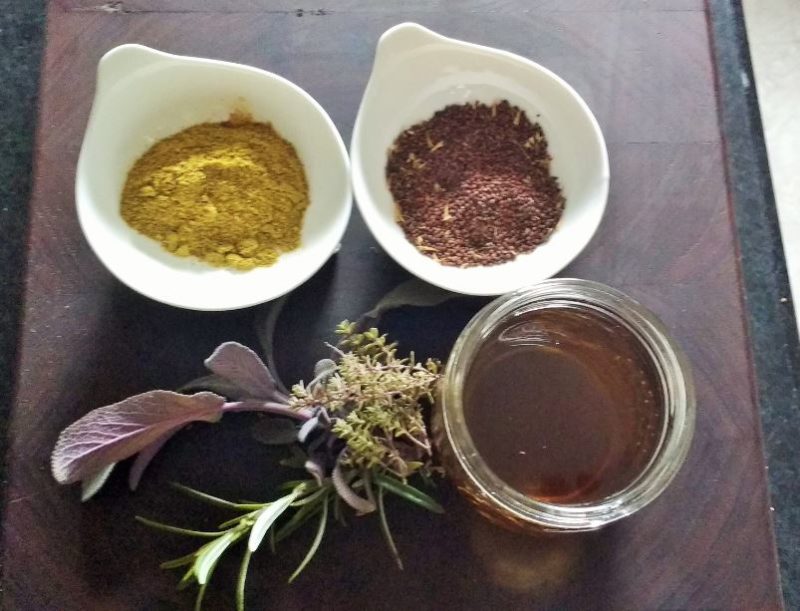
Now let’s take a look at some specific tips for creating your own extraction recipes at home.
Tip 1: Using Fresh and Dried Herbs
Herbs can be used fresh or dried. Herbs all have varying strengths.
For example, a little rosemary goes a long way in just about any recipe, including vinegar extractions. However, if you are trying to extract something with a more subtle flavor like lemon balm, it will take a bigger bunch of the herb to achieve similar results. The reason being, these two plants have very different amounts of oil in their leaves.
Generally, slow-growing plants tend to have more condensed oils than fast-growing plants. Evergreens also tend to have more oils in their leaves than vegetative perennials or annuals because they have longer growing periods. That is why things like Bay leaf or wintergreen – both perennial evergreens – have very intensely flavored leaves.
– The Rub Test
When in doubt about whether a herb will impart a lot of flavor to my vinegar, I use the rub test. Rub the leaves with your fingers and see how long the aroma lasts. Something like lavender lingers for a long time, while fresh oregano evaporates in minutes.
The stronger the aroma and the longer it lingers, the less quantity you need for extractions. For plants with less durable aromas, fill your jars stuffed to the brim. For herbs that have scents that can linger for hours, then sometimes only a few sprigs are necessary.
– Dried versus Fresh Herb Quantities
In cooking, when you use dry herbs, the flavors usually become more concentrated. Dried thyme, for example, is about three times as strong as fresh thyme. Typically, this means you can use less quantity. However, this is not always the case for dried herbs used in vinegar extractions.
Depending on the drying method, sometimes the oils are lost or altered in the process. Most of the time, with vinegar extractions, I tend to use more dried herbs than I would with fresh to extract the same intensity of flavor.
Tip 2: Spices

Generally speaking, the distinction between herbs and spices is that spices come from the seeds and bark of plants, while herbs are the leaf and stem parts of plants. For example, cilantro is a herb. However, coriander, made from the seeds that come from the cilantro plant, is a spice.
Barks and seeds are less permeable than leaves. It takes longer for the acetic acid in vinegar to break down the flavor components in spices than in herbs. Generally, spice extractions take two weeks and sometimes more to fully develop their flavor.
Seeds that mash easily, like dill or fennel, break down faster than seeds that take some elbow grease to crush using a mortar and pestle. Cumin, coriander, fenugreek, and cinnamon bark take a lot longer for flavors to be fully extracted.
For spices though, you can extract for a more extended period, or you can add more to your jar. For example, you could leave a teaspoon of cumin in vinegar for a month or use a tablespoon of cumin to start with and leave it for two weeks.
Spices made of seeds tend to retain a lot of oils and minerals. Similar to pungent herbs, a little can go a long way toward flavoring your extraction.
Tip 3: Roots and Rhizomes
Roots, like horseradish, garlic, onions, and shallots are often used to make vinegar tonics and fire ciders. Rhizomes like ginger, turmeric, and galangal are also go-to-favorites for use as flavorings and because of their health benefits in vinegar extractions.
Most of the time when you are using roots and rhizomes, the goal is to extract the anti-inflammatory, digestive, and immunity-boosting compounds. For that purpose, filling your jar with as much of these as you can is going to give you the most significant health boost. By chopping them up into finer pieces, you also facilitate faster extraction.
The challenge with soft-tissued roots and rhizomes though is that vinegar does such a good job extracting their flavor, that the taste can become overwhelming.
Personally, I like to go heavy on garlic and ginger because I love their flavor. Then, I go easy on turmeric and galangal because I find that less is more with those two uber-flavorful rhizomes. However, if you love chewing on turmeric roots then, by all means, add all you want!
Tip 4: Fruits and Nuts
Fruits and nuts also make for excellent tasting vinegar extractions. However, it’s important to keep in mind that these things contain a lot more sugar than herbs, spices, and most roots used in vinegar extractions.
Sugar in liquid (even vinegar), left out at room temperature, will usually result in fermentation. When making fruit or nut extractions with vinegar, ‘burp’ your jar daily before shaking it to avoid accidental explosions!
– Soft-Fruits
Soft-bodied fruits like fresh berries only take a couple of days for extraction. I usually strain blackberries or strawberries after 48 hours to avoid extracting the off-flavors that can come from the seeds.
– Rinds
Rinds, such as from lemon, lime, or orange, also work well for extractions because of their high oil content. They do impart a little more bitterness in vinegar than they would in an alcohol or water extraction. So, you may want to reserve the rinds for use in fire cider with sweetener or shrubs.
– Fruit Juice
Many recipes also call for juices to be added to raw vinegar. Because juices usually contain sugar, they also tend to convert quickly to vinegar. Also, since quite a bit of the mineral and oils tend to be in the plant matter, juices don’t always impart a lot of flavor to the mix if stored more than a few weeks.
If you are working with juices, you may want to work in small batches intended for short-term use to preserve some of the original juice flavors. You may also want to store your finished extractions that contain juice in the fridge to slow down the conversion of those sugars to acetic acid.
I tend to add the juice when making my shrubs or to dilute my fire ciders at the time of drinking, rather than adding them during the extraction process.
– Nuts
Nuts can be quite flavorful in vinegar. Walnut, almond, and cashew are some of my favorite flavors. Truth be told, though, nuts are expensive. So, unless someone gives me some of their bumper crops, I don’t do a lot of nut extractions with vinegar.
Tip 5: Colorful Additions
Vinegar is also marvelous at extracting color from certain plants. When I make sage vinegar to use as a pork marinade, I always opt for purple sage. It turns my homemade apple cider vinegar a kind of magenta color that looks stunning when bottled.
A few darkly colored red perilla (shiso) leaves will turn vinegar dark burgundy. When using in small quantities, those pretty purple leaves only add just a hint of licorice to your mix.
Flower blossoms such as orange nasturtiums or from common chives also tint the vinegar. When working with flowers, using white vinegar like white wine, rice, or distilled will make the colors more pronounced. Pale colored flowers and leaves need to be added at higher densities than more deeply colored plant matter.
Extract Like an Expert
You are now well-equipped to make your own herbal vinegar and infused vinegar recipes. If you are growing your own herbs, spices, fruit, and more, then get yourself a jug of distilled vinegar and start experimenting with flavor mixes.
When you find a few that work well for you, upgrade your vinegar to some fantastic raw white wine vinegar you picked up at the health store (or made yourself). Then, you can turn your extractions into tonics, fire cider, and fancy shrubs to share proudly with your friends and family.

